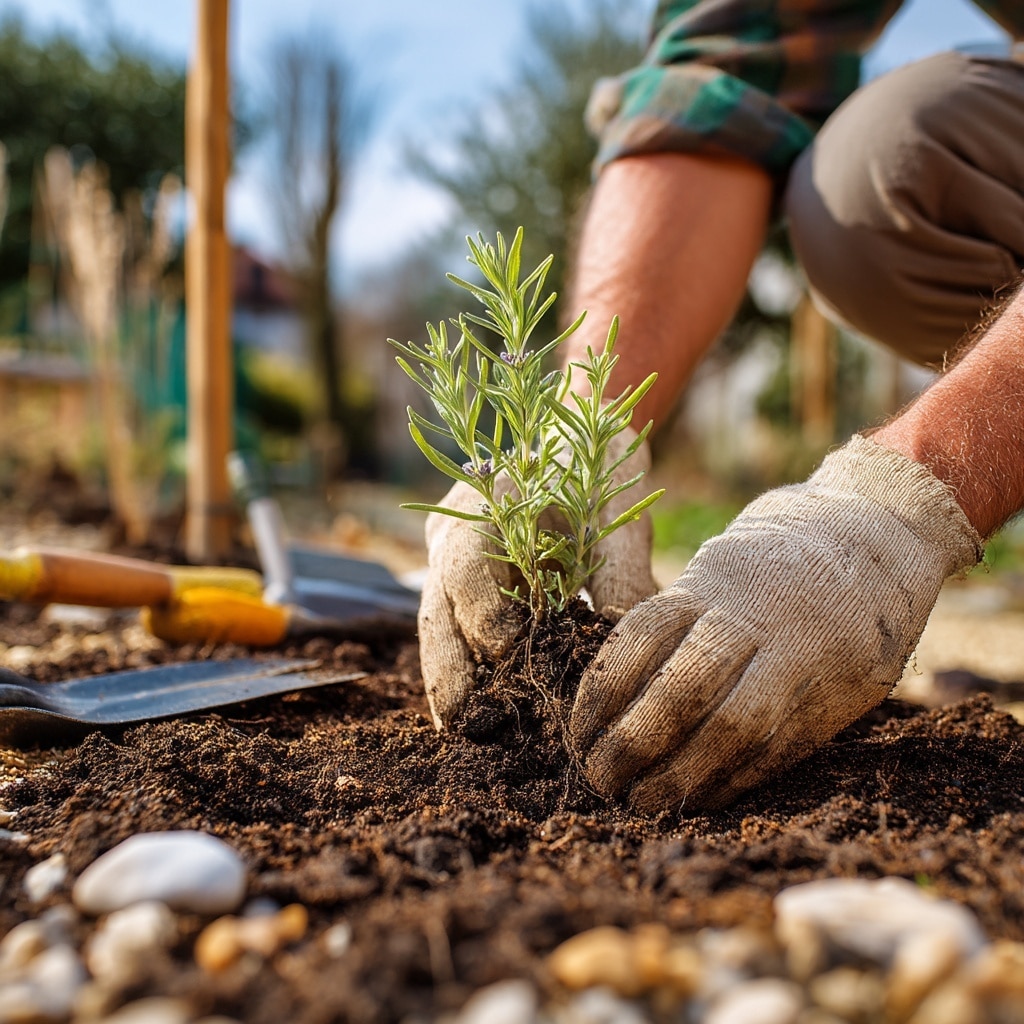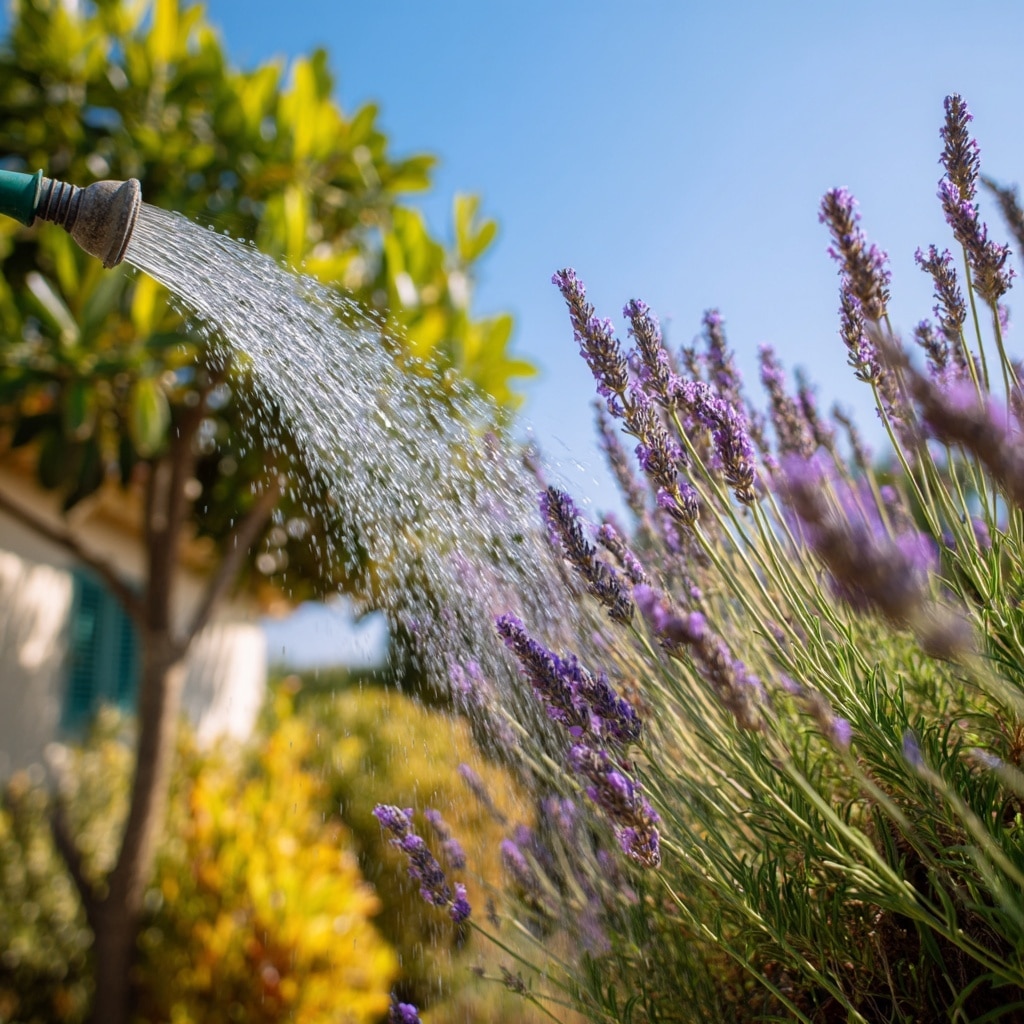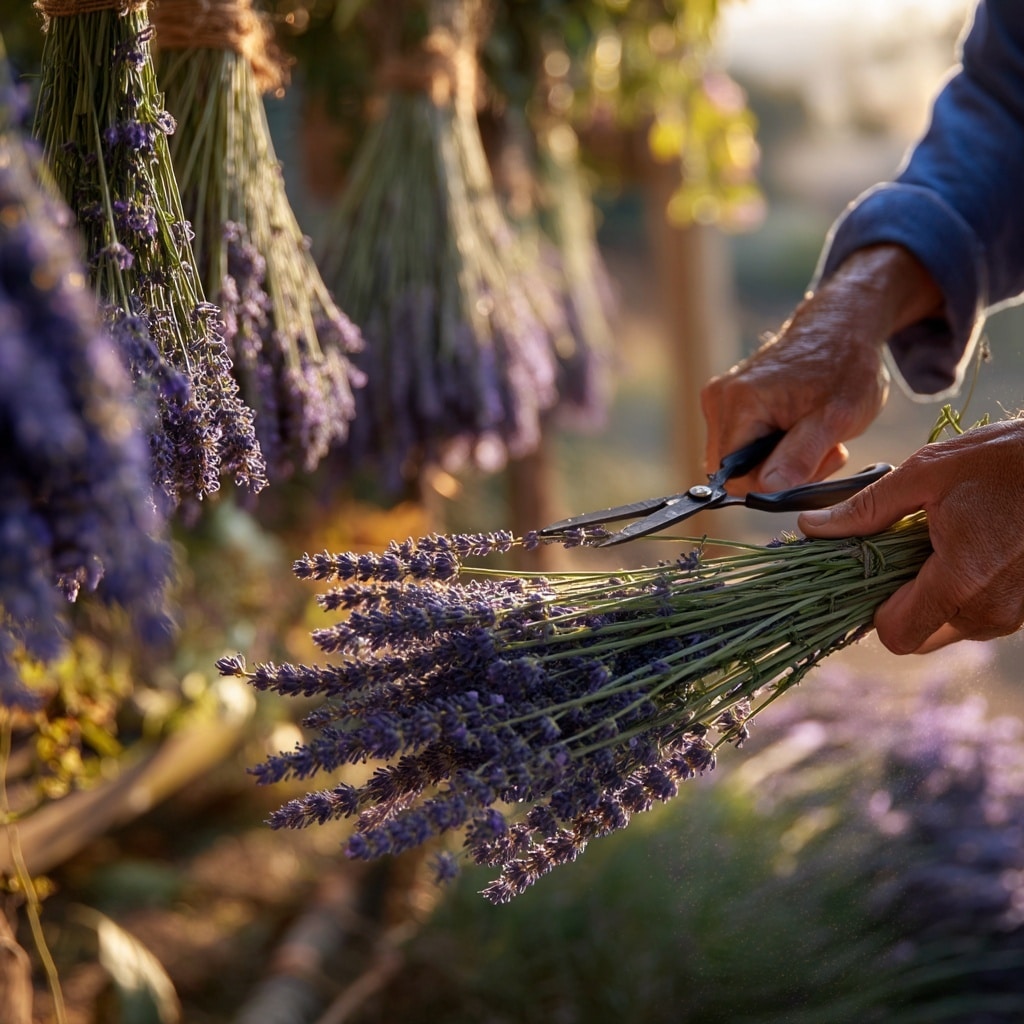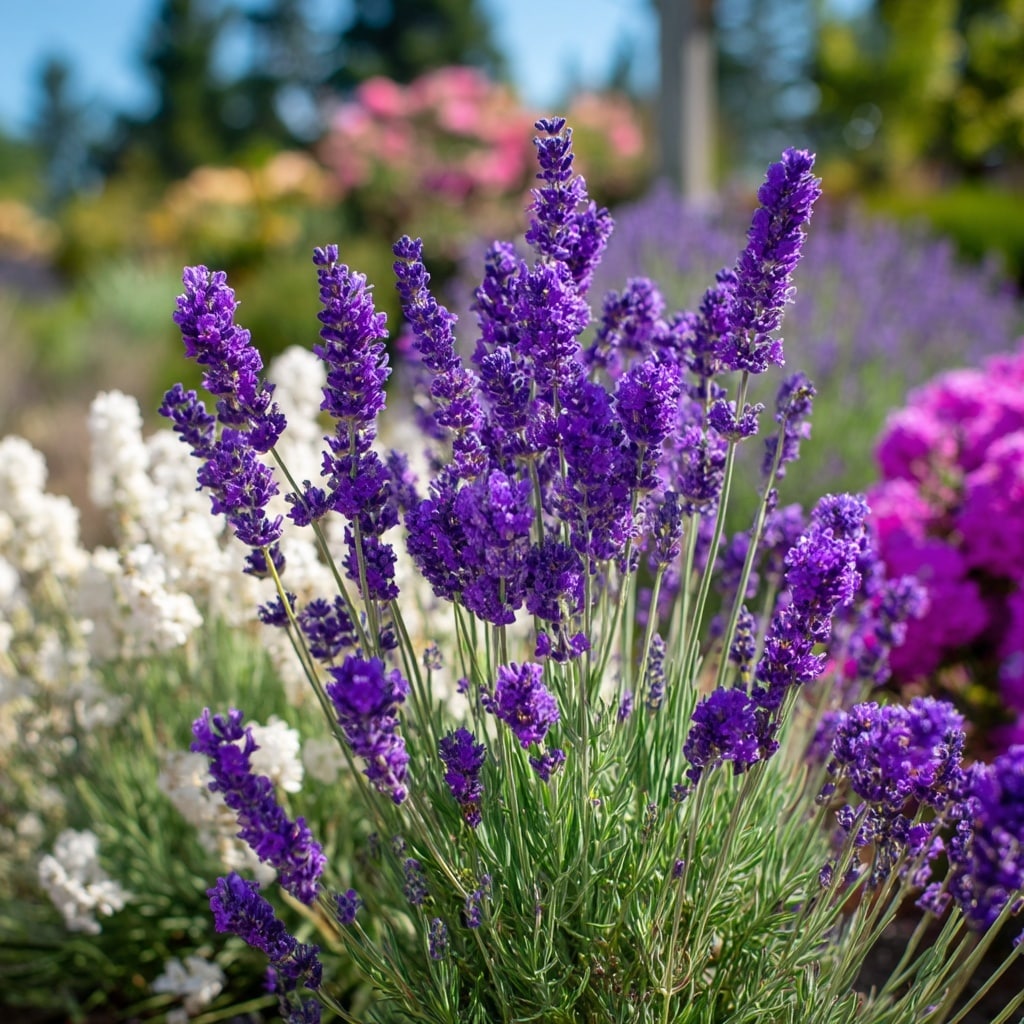Lavender plant lovers know there’s nothing quite like the sight and scent of this beloved herb swaying gently in the sun. Whether you’re a seasoned gardener or just starting out, adding lavender to your garden brings charm, fragrance, and practical benefits. This resilient herb attracts pollinators, deters pests, and even offers a soothing presence indoors and out. In this guide, you’ll discover how to plant, nurture, and enjoy the many uses of the lavender plant—right from soil to sachet.
Table of Contents
About the Lavender Plant & Its Varieties
The lavender plant (botanically known as Lavandula angustifolia) is a woody perennial cherished for its aromatic blooms and silvery-green foliage. Native to the Mediterranean region, this herb thrives in sunny, dry conditions and has earned its place in gardens worldwide for both ornamental and functional purposes.
Lavender typically grows between 1 to 3 feet tall, forming bushy mounds with slender flower spikes in shades of purple, blue, pink, or white. Its sweet, balsamic fragrance makes it a favorite in home gardens, especially near walkways or seating areas where the scent can be enjoyed up close.
There are several types of lavender plants to consider:
English Lavender (Lavandula angustifolia)
- Hardy to USDA Zone 5
- Compact, fragrant, and blooms once or twice per season
- Popular varieties include:
- ‘Hidcote’ – Deep purple flowers, silvery foliage
- ‘Munstead’ – Violet-blue blooms, compact growth
- ‘Miss Katherine’ – Unique deep pink flowers
Lavandin (Lavandula x intermedia)
- A hybrid between English and Portuguese lavender
- Larger plants with longer flower stems
- Common varieties:
- ‘Phenomenal’ – Highly heat- and humidity-tolerant
- ‘Provence’ – Known for its strong fragrance
Spanish and French Lavender
- Less cold-hardy (best for Zones 7–9)
- Often grown in containers or as seasonal accents
Choosing the right lavender variety depends on your climate, garden space, and whether you’re growing for fragrance, drying, culinary use, or simply visual beauty.
When and How to Plant Lavender

Getting the lavender plant off to a strong start begins with good timing and proper technique. While lavender is quite forgiving once established, it’s important to lay the right foundation during planting to ensure healthy growth and abundant blooms.
When to Plant Lavender
The best time to plant lavender is in spring, after the last frost and once the soil has warmed to around 60°F (15°C). This allows the plant to establish roots before the intense summer heat. If you’re planting in fall, choose larger, well-developed plants to give them a better chance of surviving winter, especially in cooler climates.
Where to Plant Lavender
Lavender thrives in:
- Full sun: 6 to 8 hours daily
- Well-drained soil: Sandy or gravelly soils are ideal
- Neutral to slightly alkaline pH: Between 6.7 and 7.3
Avoid spots where water tends to collect, as soggy roots can quickly lead to rot.
How to Plant Lavender
Here’s how to plant your lavender plant for success:
- Soil Prep: If you’re working with clay or compacted soil, mix in compost, sand, or aged manure to improve drainage.
- Spacing: Space plants 2 to 3 feet apart to ensure airflow and reduce fungal risk.
- Starter Plants vs. Seeds: Lavender is notoriously slow to germinate from seed. Most gardeners prefer to buy nursery-grown starts or propagate via cuttings.
- Planting Technique:
- Dig a hole just deep enough for the root ball.
- Place the plant in the hole so the crown sits slightly above soil level.
- Backfill gently and firm the soil.
- Mulching: Use rock mulch or pea gravel to keep weeds at bay and reflect heat—just keep mulch away from the base to avoid moisture buildup around the crown.
With careful planting, your lavender plant will be ready to flourish as the seasons unfold.
How to Care for Lavender Throughout the Seasons

Once established, the lavender plant is surprisingly low-maintenance, making it a favorite among busy gardeners. However, to keep it thriving year after year, proper seasonal care is key—from watering routines to winter protection and pruning techniques.
Watering
Lavender is drought-tolerant, but that doesn’t mean it never needs water. Here’s how to keep it healthy:
- New plants: Water once or twice weekly until established (usually the first few weeks).
- Mature plants: Water deeply every two to three weeks during dry spells. Increase frequency slightly when buds begin to form.
- Watch for overwatering: Yellowing leaves are a common sign. Ensure soil dries out between waterings.
Pruning Lavender
Pruning is essential to prevent your lavender plant from becoming woody and leggy.
- In cooler climates: Prune in early spring when new growth appears. Trim back about one-third of the plant, but never cut into old wood—it won’t regenerate.
- In warmer climates: Prune in autumn after blooming.
Regular pruning helps encourage fuller, more compact growth and improves air circulation, which can reduce disease.
Winter Care Tips
If you live in a zone where winters get harsh, take steps to protect your lavender:
- In-ground plants:
- Add a winter mulch (like straw or evergreen boughs) after the first hard frost.
- Avoid heavy wet mulches that can trap moisture around the crown.
- Container-grown lavender:
- Move indoors before hard frosts.
- Place in a sunny south-facing window and water sparingly over winter while the plant is dormant.
Proper seasonal care helps your lavender plant stay productive, fragrant, and attractive year-round.
How to Harvest and Propagate Lavender

A thriving lavender plant not only looks and smells wonderful—it also offers a generous harvest you can use in everything from home décor to herbal remedies. With the right timing and methods, you can enjoy lavender’s benefits all year while growing new plants for free.
Harvesting Lavender Flowers
Timing is everything when harvesting lavender to preserve its fragrance and color.
- Best time of day: Early morning, when oils are most concentrated.
- Best stage of bloom: When about half the flower buds on a spike have opened.
- How to harvest:
- Use clean, sharp shears.
- Cut stems as long as possible, just above a leaf node.
- Bundle 10–15 stems together with rubber bands.
- Hang them upside down in a cool, dark, and dry place with good air circulation.
Once dried, you can gently strip the flowers from the stems and store them in a lidded glass jar. Use them for sachets, potpourri, or culinary creations.
Propagating Lavender from Cuttings
Skip the hassle of seeds by propagating your own lavender plant through cuttings. It’s cost-effective and surprisingly simple.
- When to take cuttings: After the plant has finished blooming.
- How to do it:
- Choose healthy non-flowering side shoots.
- Cut a 4–6 inch stem close to the base.
- Remove leaves from the lower half and lightly scrape one side of the stem.
- Optional: Dip the stem in rooting hormone.
- Plant the cutting in a pot with light, well-draining potting mix.
- Cover the pot with a clear plastic bag to create humidity and place in a warm, shaded area.
- In about 3 weeks, roots should form. Tug gently—if it resists, roots are established.
Once rooted, transplant to a larger pot or directly into the garden.
Propagation lets you expand your lavender garden with healthy clones of your favorite plant.
Common Pests, Diseases, and Prevention Tips

Although the lavender plant is known for being resilient and pest-resistant, it’s not entirely immune to issues. A healthy lavender thrives in dry, sunny conditions with good airflow—but when stressed by overwatering, poor soil, or crowding, it can become vulnerable to pests and disease.
Common Pests
- Aphids
Symptoms: Yellowing, curling leaves; sticky residue (honeydew); black sooty mold
Control: Spray with a strong jet of water, apply insecticidal soap, and attract natural predators like ladybugs. - Thrips
Symptoms: Silvery speckled leaves, stunted growth
Control: Remove infested parts, use yellow sticky traps, or treat with diluted isopropyl alcohol spray. - Whiteflies
Symptoms: Yellowing leaves, sticky residue, tiny white insects flying when disturbed
Control: Use sticky traps, vacuum pests gently, or spray with insecticidal soap in early morning or evening.
Diseases to Watch For
- Root Rot & Crown Rot (e.g., Phytophthora)
Symptoms: Wilting, blackened stems, brown roots
Cause: Overwatering and poor drainage
Prevention: Improve drainage, avoid overhead watering, and never plant lavender in compacted soil. - Fungal Leaf Spots
Symptoms: Brown or black spots on leaves; leaf drop
Prevention: Space plants well, prune for airflow, and water at the base. - Fusarium Wilt
Symptoms: Sudden wilting on one side, yellow leaves, plant collapse
Control: Remove infected plants (do not compost), rotate plantings, and disinfect tools.
General Prevention Tips
- Space plants properly (2–3 feet apart)
- Water only when soil is dry
- Prune annually to increase airflow
- Avoid high-nitrogen fertilizers
- Disinfect pruning tools regularly
By following these steps, your lavender plant will stay vibrant, productive, and largely free from issues.
Culinary and Household Uses for Lavender

Beyond its beauty and fragrance, the lavender plant is remarkably versatile. From the kitchen to the linen closet, lavender offers soothing, aromatic, and practical uses that make it a true garden multitasker.
Culinary Uses
While not all lavender varieties are edible, English lavender (Lavandula angustifolia) is the go-to for culinary purposes. Used sparingly, its floral, slightly minty flavor can elevate both sweet and savory dishes.
- Cooking Tips:
- Use dried or fresh buds in small amounts to avoid bitterness.
- Strip buds from the stems and crush lightly before adding to recipes.
- Popular Lavender Recipes:
- Baked goods: Lavender shortbread cookies, scones, lemon-lavender cake
- Beverages: Lavender lemonade, lavender-infused teas or syrups
- Savory dishes: Mix into herb blends like herbes de Provence, or infuse into sauces for lamb and poultry
💡 Tip: Always use culinary-grade lavender, especially when sourcing dried flowers from stores or online.
Household & Aromatherapy Uses
Lavender’s natural fragrance and calming properties have made it a staple in homes for centuries.
- Dried Lavender Uses:
- Fill sachets to freshen linens, drawers, and closets
- Repel moths naturally in stored clothes or towels
- Slip into your pillowcase to promote restful sleep
- Lavender Oil:
- Add a few drops to bathwater for relaxation
- Use in homemade candles or soaps
- Diffuse for stress relief or to aid sleep
- DIY Tip: Make your own lavender sachets using dried buds and small fabric squares—simple, fragrant gifts that last for months.
With just a few plants, your lavender garden can provide enough buds for both cooking and crafting throughout the year.
Conclusion
The lavender plant is more than just a pretty face in the garden—it’s a hardy, fragrant, and multi-purpose herb that rewards gardeners with beauty, pollinator appeal, and practical uses throughout the year. With the right planting site, proper pruning, and good drainage, lavender is easy to maintain and thrives even in dry or rocky soils.
Whether you’re harvesting blooms for culinary delights, crafting calming sachets, or simply enjoying the soft sway of its blooms in the breeze, growing lavender is a rewarding experience for any gardener. Choose the right variety for your climate, and with a little care, your lavender plant will flourish season after season.


